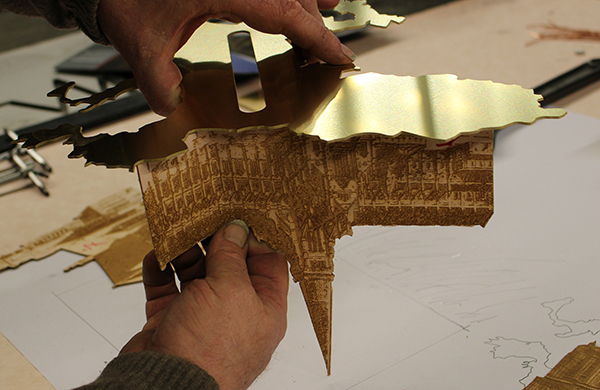Inspired by the Olympic Torch of Athens, FRH launched the “Torch of Heritage and Culture” initiative, to raise awareness and safeguard the importance of Europe’s rich religious heritage. The FRH Torch is a memory treasure box, containing personal letters from prominent members of the international community but also from European citizens themselves. These letters, contributed during an official Torch ceremony held at various events all over Europe, describe personal memories and stories relating to religious heritage.
The FRH Torch traveled across Europe, stopping at a number of events and collecting new contributions. These, in turn, were presented to the European Commissioner for Education, Culture, Youth and Sport, Mr Tibor Navracsics, at the FRH Conference which took place on 11-13 October, 2018 in Paris.
The FRH Torch brought together diverse community groups with different traditions and languages in an action to foster unity while celebrating Europe’s diversity. The Torch offered visibility and carried the messages of ministers for culture and politicians, artists, scientists, European citizens, as well as refugees, all of whom helped rediscover the value of our shared heritage.
You can now join the Torch Public Campaign by contributing your own story/memory!
But what is the FRH Torch?
The FRH Torch of Heritage and Culture is a metaphor, it is a well of memories, which combined are a testimony to the universal nature of European culture. The FRH Torch is a memory treasure box, containing personal, often handwritten letters from prominent members of the international community but also from European citizens themselves. These letters, contributed during an official Torch ceremony held at various events all over Europe, describe personal memories and stories relating to religious heritage.
Afterwards we wandered around the church grounds and read the names and dates upon the gravestones. At the back a lovely view opens up onto fields and pastures. The church sits on a hillock, or wierden, which granted us this view. […] One cannot simply do with heritage what one wants. Making use of local religious heritage is not the same as borrowing from other cultures. Because the churches bind heritage materially to a place, they demand a word in any discussion about the meaning of religion.
By Todd H. Weir, Director, Centre for Religion and Heritage, University of GroningenAfter all this we went back to Sadad, to find everything destroyed and vandalized, that did not break it or its residents, people stood by, helped and supported each other and within three months Sadad was standing again, and celebrated Christmas and New Year’s with tears and smiles and a great intention to rebuild everything the terrorism has desecrated.
By Anas Hannoun, musician, Syrian refugee
Where did the Torch travel to?
During the European Year of Cultural Heritage, the FRH Torch traveled across Europe, stopping at a number of events related to cultural heritage, where new contributions were collected. The project was launched in Leeuwarden, The Netherlands, on 8 January 2018, and was hosted in numerous events throughout the European continent. Discover where the Torch traveled on the FRH Torch map!
Who can contribute?
Everyone! FRH has invited prominent politicians, artists, professors and spiritual leaders to participate in this initiative. Among the first contributors were the Deputy Minister of Culture of the Province of Friesland Johannes Kramer, Professor Todd Weir, University of Groningen, Reverend Edna Zwerver and Anas Hannoun, musician and Syrian refugee.
However, we welcome all contributions. Each memory is equally important, as they all add up to the sense of community built around religious heritage. We would be very happy to receive your own story and to publish it on our website. To submit your letter, click here.
How does it end?
The last public contributions, including a personal story from Tibor Navracsics, European Commissioner for Education, Culture, Youth and Sport, were deposited at the FRH conference, which took place on 11-13 October 2018.
How does it end? In a way, it doesn’t. The collection of memories will continue its virtual life, accessible to everyone on the FRH website, proof that we do have a lot in common as Europeans, and that there is indeed a collective need for protecting and promoting religious heritage. Also, the Torch Public Campaign is open until the end of the EYCH, on the 31st of December 2018.
Some [churches] are still in service as a House of God but some also serve as galleries, theatres, shops, houses or are simply empty. They will, however, always be buildings full of stories. Religious stories, part of religious heritage, but also stories about big or small happenings in the community that are told again and again.
By Peter de Haan, chairman, Church of Huizum in Leeuwarden






Follow us: